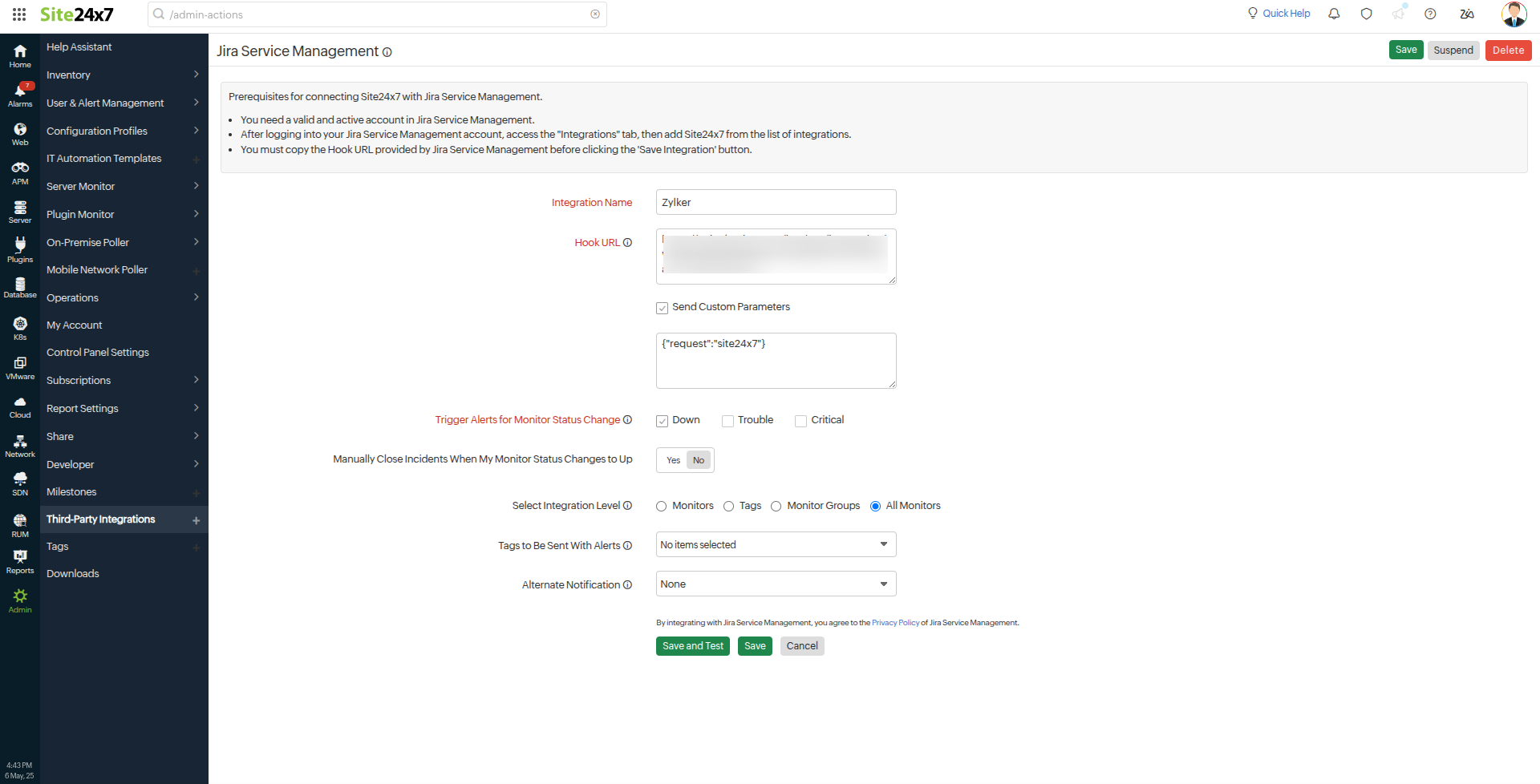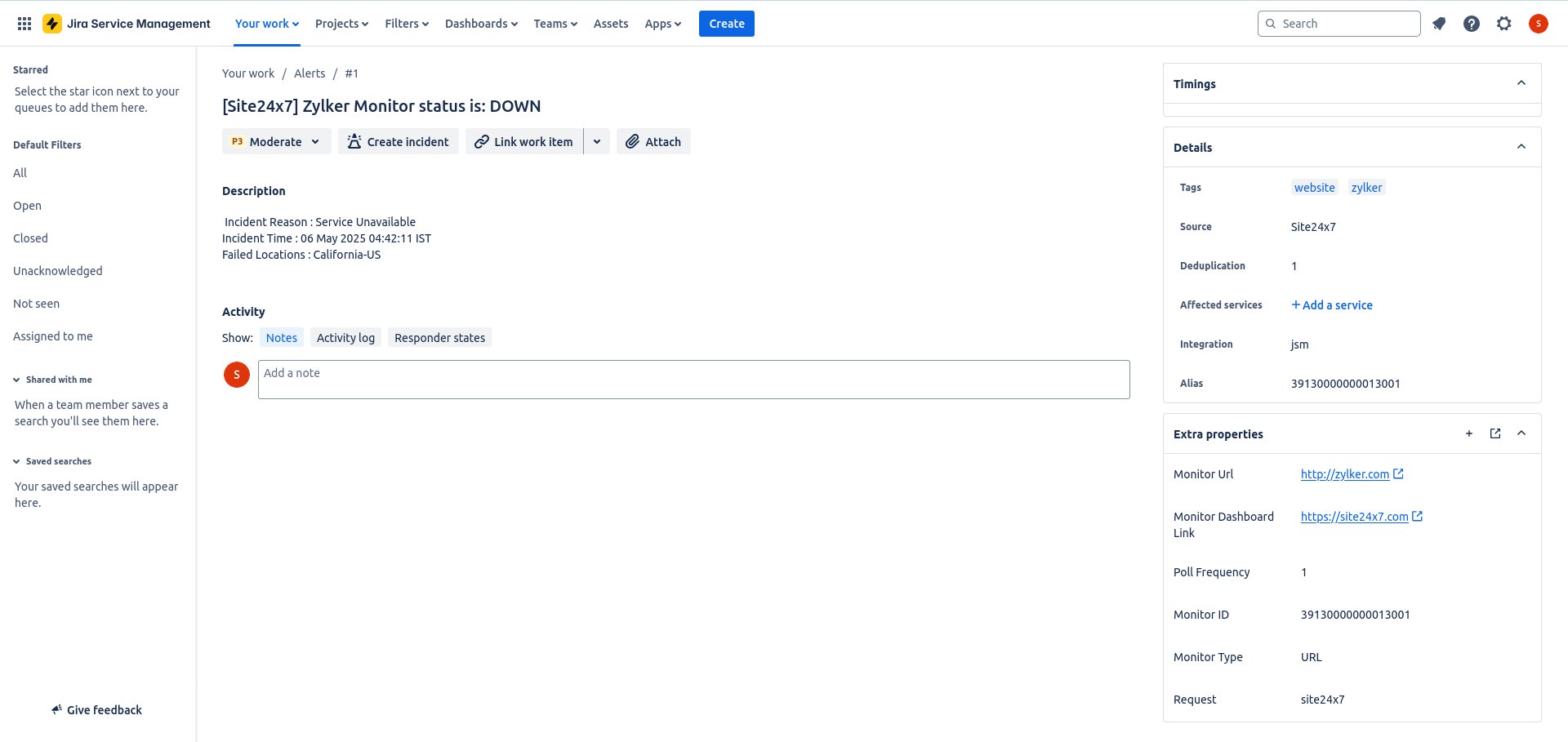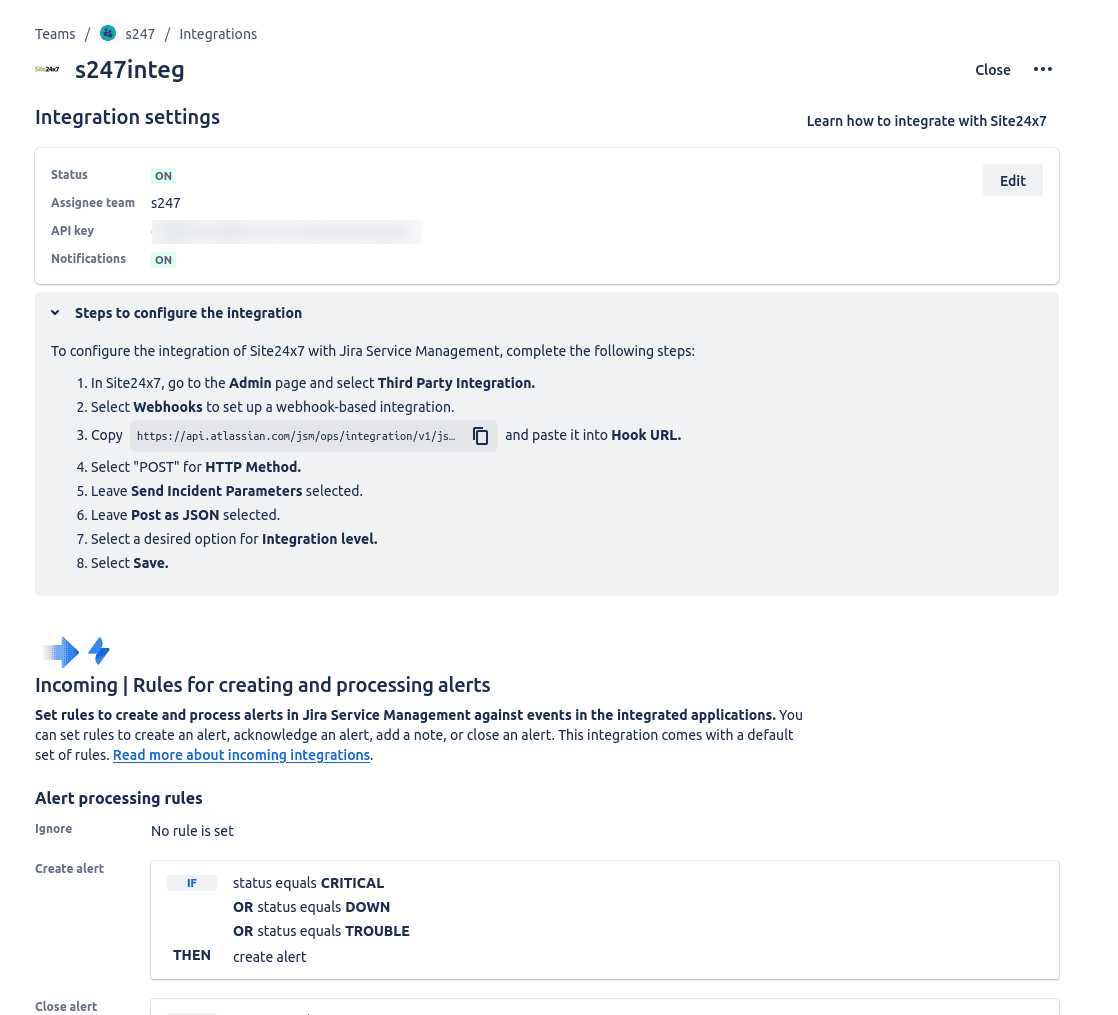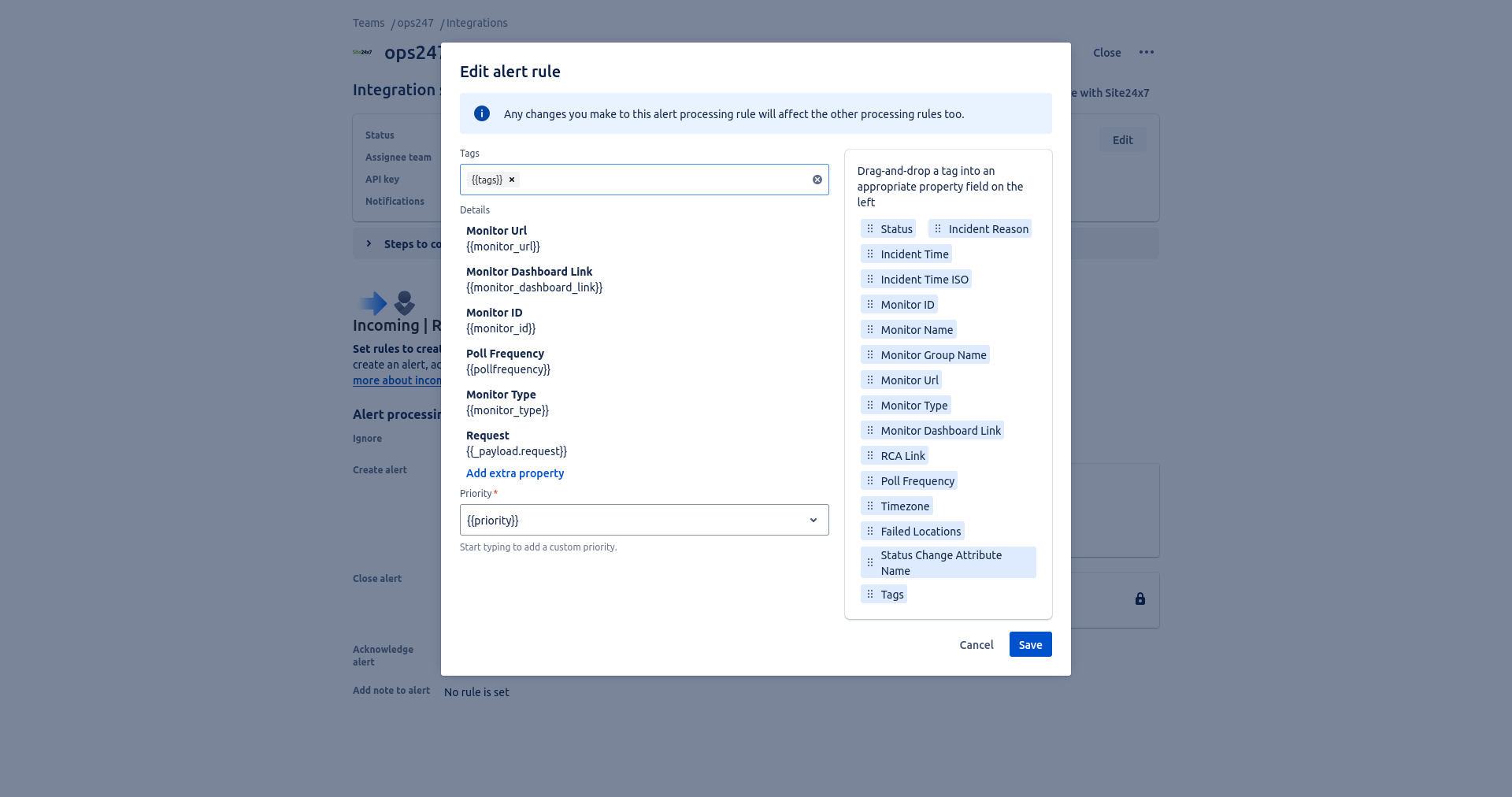Jira Service Management integration
Jira Service Management is a comprehensive IT service management platform designed for DevOps and IT teams. Users can integrate Site24x7 with Jira Service Management to streamline monitor alerts and incident resolution processes by leveraging Jira’s automated ticketing, incident tracking, and workflow management capabilities.
Key capabilities of the integration
- A Site24x7 monitor status alert automatically creates an incident ticket in Jira Service Management.
- Once the status of the monitor is Up again, the related ticket is updated or closed in Jira Service Management.
Prerequisites
- You need a valid, active account in Jira Service Management.
- Copy and securely retain the hook URL provided by Jira Service Management. After successful integration, Site24x7 will post status alerts to this hook URL.
Configuring the Jira Service Management side of the integration
To integrate with Site24x7 from Jira Service Management, follow the integration steps mentioned here.
Configuring the Site24x7 side of the integration
Once you've generated the Jira Service Management hook or integration URL, you must log in to your Site24x7 account to complete the integration process. Follow these steps:

- Log in to your Site24x7 account.
- Navigate to Admin > Third-Party Integrations.
- Click the Add Third-Party Integration button. Select Jira Service Management from the list.
- Provide the mandatory information in the Jira Service Management integration form to complete the integration process:
- Integration Name: Provide the name of your integration.
- Hook URL: Paste the copied unique Jira Service Management hook URL here.
- Send Custom Parameters: Write specific code in the URL itself and pass the variables using Incident Parameters or Custom Parameters.
- Select Integration Level: Choose your preferred integration level to send alerts from your Site24x7 account to the relevant Jira Service Management channel. You have the following options:
- Monitors: Select at least one specific monitor to send alerts and RCA links from only that monitor to your Jira Service Management channel.
- Tags: Select at least one specific tag to send Site24x7 alerts and RCA links corresponding to that tag to your Jira Service Management channel.
- Monitor Groups: Choose at least one monitor group to send alerts and RCA links from that group to your desired Jira Service Management channel.
- All Monitors: Opt to send all Site24x7 alerts and RCA links to your chosen Jira Service Management channel.
NoteWhen tags are associated with your monitor group, only alerts from the parent-level monitors in the group will be logged in Jira Service Management. If there are monitors at the subgroup level, their alerts will not be recorded.
- Tags to Be Sent With Alerts: Select the tag keys associated with the monitor that need to be sent with alerts. When an alert is triggered, tags that match the monitor will be included in the alert notifications. If no tags are selected, all the tags associated with the monitor will be present in the alert notifications.
- Alternate Notification: Select an alternative service to be activated if the primary or current third-party notification service encounters an issue to ensure that alerts are not missed.
- Click the Save and Test button to save the integration and receive a test alert. Alternatively, you can click the Save button to finish the integration.
Once the setup process is completed, the Jira Service Management integration will be listed on the Third-Party Integrations listing page. You can set up multiple such Jira Service Management integrations in your Site24x7 account.
Suspend, activate, or delete the Jira Service Management integration
Follow the steps below to suspend an active Jira Service Management integration:
- Log in to Site24x7.
- Navigate to Admin > Third-Party Integrations.
NoteAll the integrations will be listed here on the Third-Party Integrations listing page.
- Initiate a test alert to check whether the integration is a success or has any configuration error by clicking the Trigger Test Alert
 button.
button. - Open the active Jira Service Management integration that you want to suspend and click the Suspend button in the top-right corner of the integration window.
Note- On suspending your Jira Service Management integration, all incident tickets being sent to your Jira Service Management account will be stopped temporarily.
- To reactivate a suspended Jira Service Management integration, click the Activate button.
To delete an integration permanently, open the active Jira Service Management integration and click the Delete button in the top-right corner of the integration window.
Managing incident tickets in Jira Service Management
After successful integration, Site24x7 status alerts are posted to the Jira Service Management hook URL, which in turn creates incident tickets in the Jira Service Management account.

You can acknowledge an incident ticket on Jira Service Management's Alerts tab, delegate it to someone, snooze it temporarily, or even delete it permanently. You can gather more insights into the alert and resolve issues faster. After a brief outage, when the status of a Site24x7 monitor changes to Up, the relevant incident ticket will close automatically on the Jira Service Management dashboard.

Parsing Custom Parameters in Jira Service Management
To pass Custom Parameters from Site24x7 and use them in Jira Service Management:
- Log in to your Jira Service Management account.
- Navigate to the Teams tab and select the Site24x7 integration.
- Create an alert for your integration and select the Edit option under the three dots menu.
- On the Edit alert rule page, add the following Custom Parameter:
Custom Parameter:⦃⦃_payload.client⦄⦄

- Click Save to save the alert rule.
-
On this page
- Key capabilities of the integration
- Prerequisites
- Configuring the Jira Service Management side of the integration
- Configuring the Site24x7 side of the integration
- Suspend, activate, or delete the Jira Service Management integration
- Managing incident tickets in Jira Service Management
- Parsing Custom Parameters in Jira Service Management
